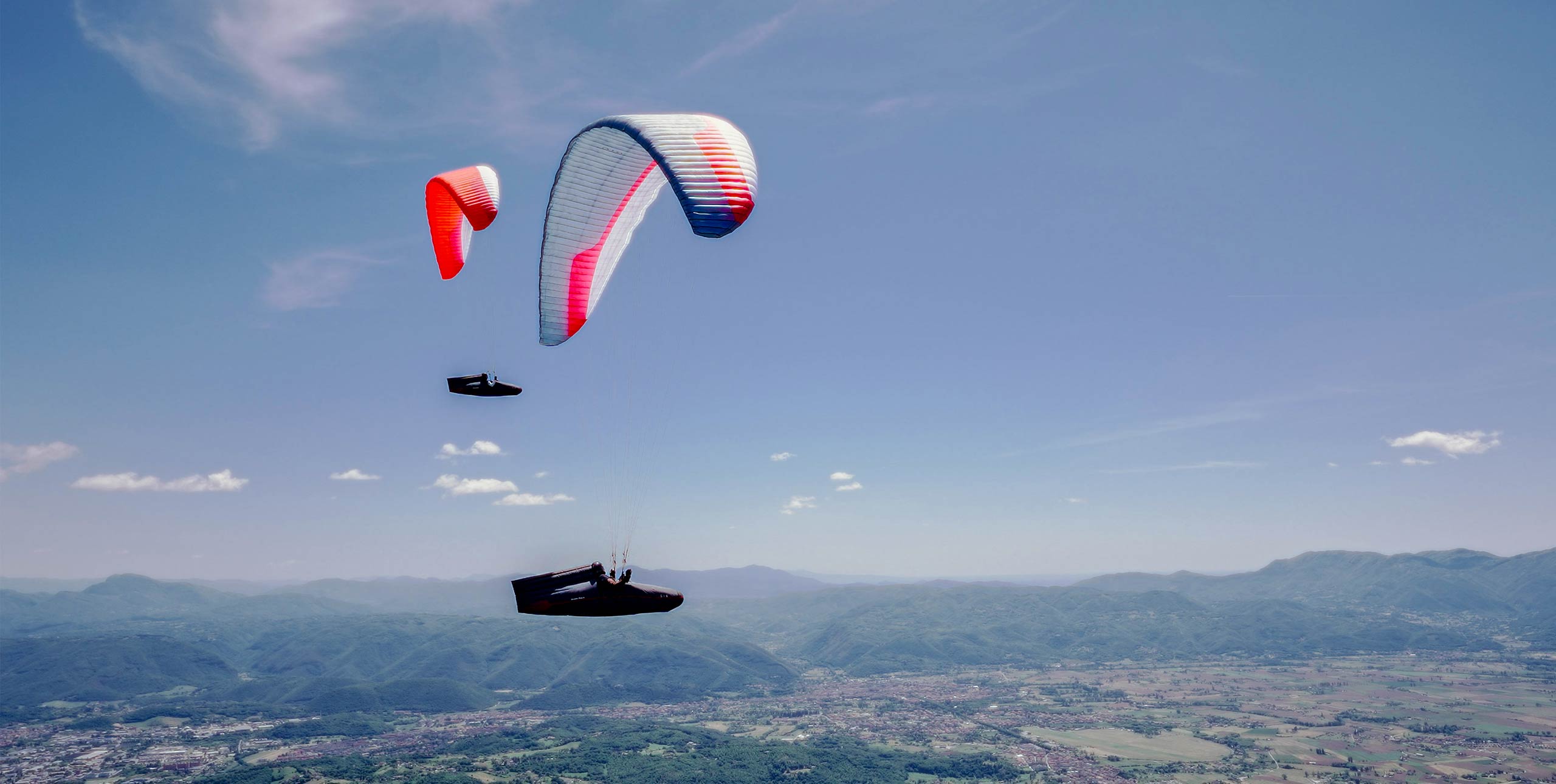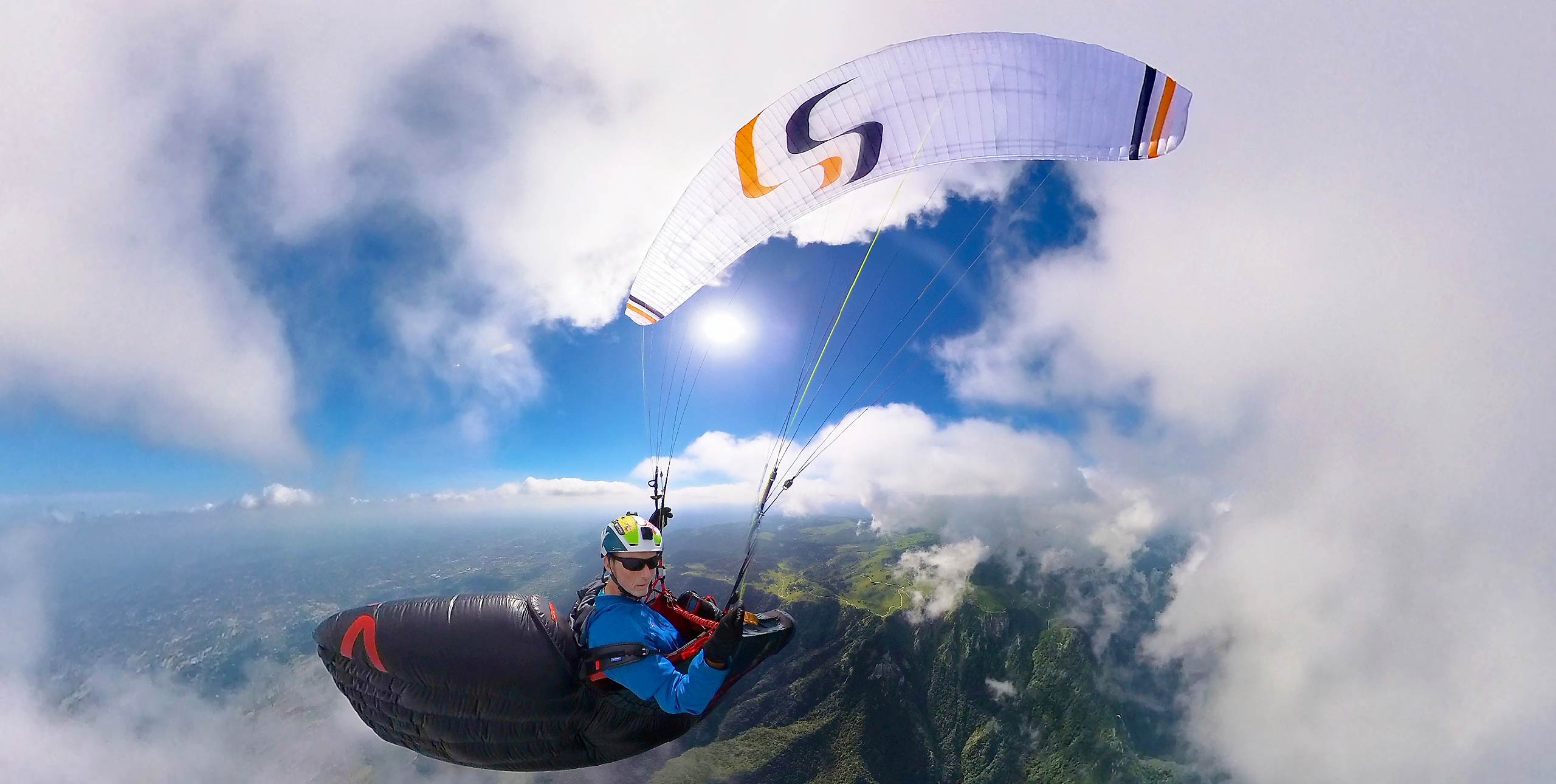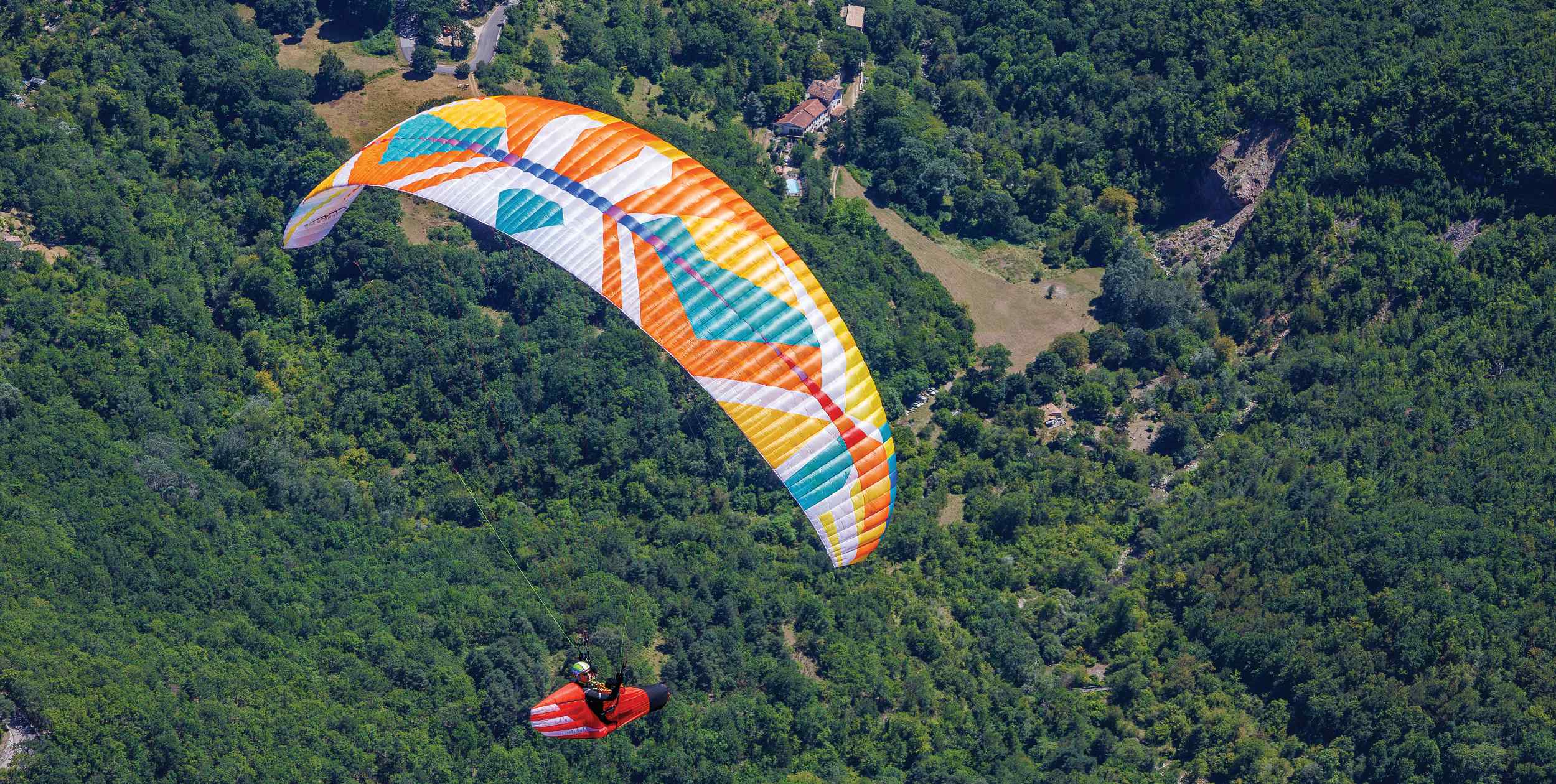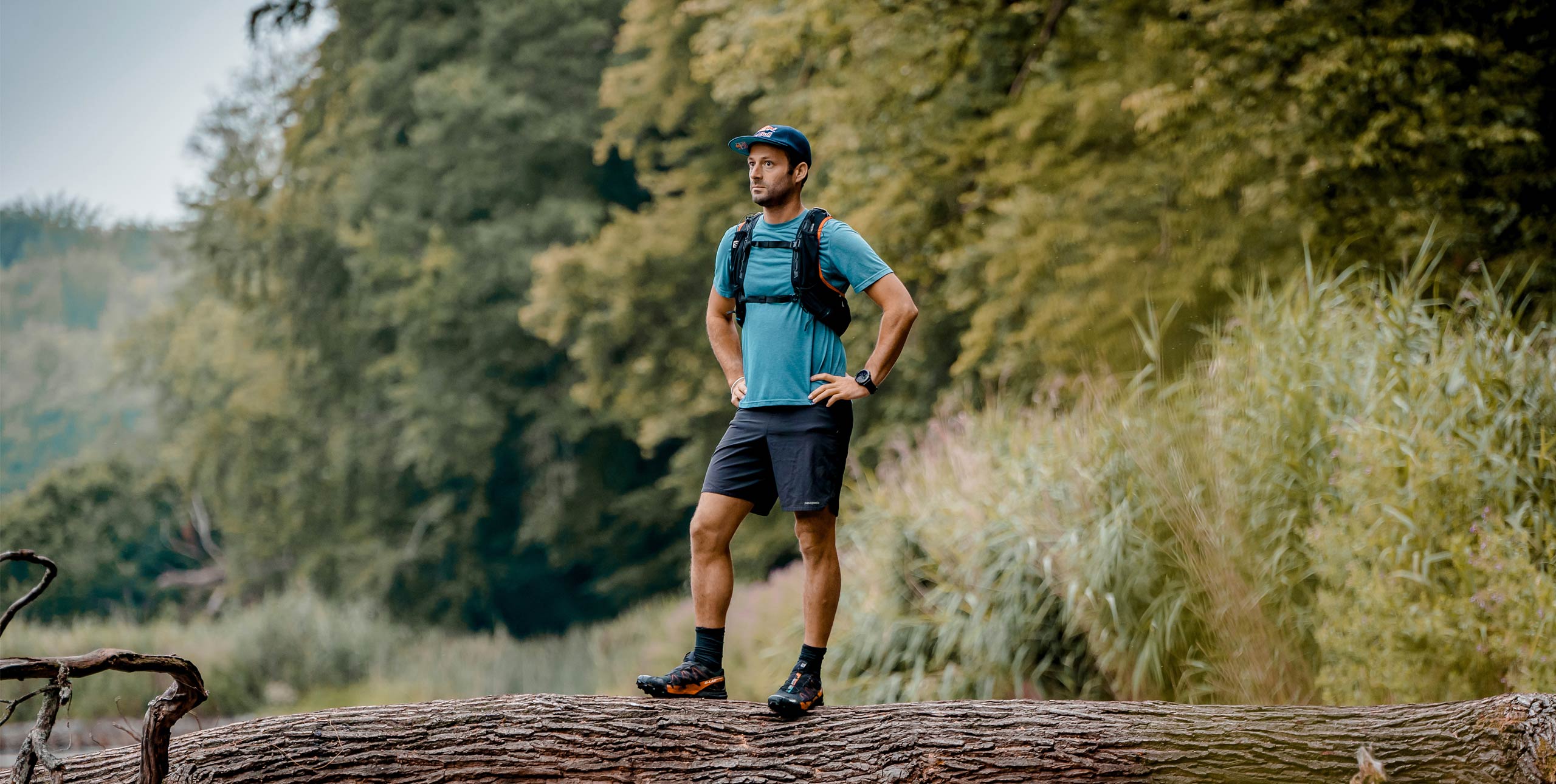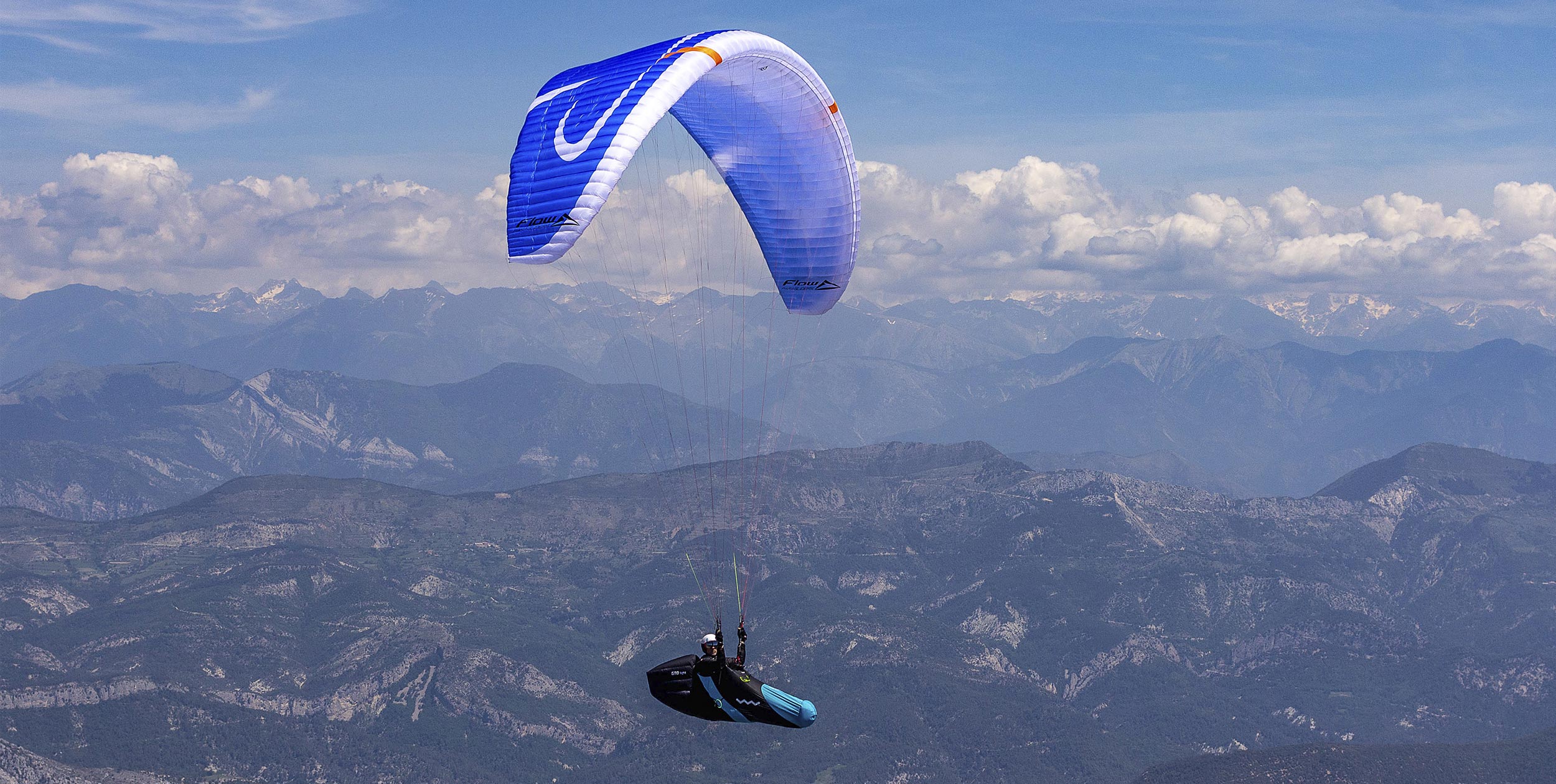
The Fusion (EN C) is the new sports class wing from Flow in Australia. The headline-grabber is that this is the world’s first “certified hybrid 3/2-line glider”, which is a shorthand way of saying it’s a three-line glider with two lines at the wingtips. This is new technology, and is also seen on the just-released Ozone Delta 4.
Released at the end of 2019 the Fusion is designed by Felipe Rezende, the one-man hive of activity who is Flow Paragliders. Based in Dee Why, Australia, over the last couple of years he has impressed pilots and his peers alike with his wings, which range from the EN-B Cosmos to the CCC Spectra.
The new 3/2-line layout means less line is used overall, which increases performance, but also, says Felipe, brings a more connected two-liner type feel to the wing. We’ll get to that.

Design and materials
Aspect ratio is 6.35, and compares with 6.05 for the Delta 4, 6.4 for the BGD Cure 2 and 6.3 for the 777 Queen 2.
The sail of the standard-weight version is a mix of 38g/m2 cloth on the leading edge and 32g/m2 elsewhere. There’s a sharknose with an overlapping wires design.
There is quite a bit of plastic in the glider, with long rods that go back about 80cm in the centre, and separate rods over the area where the C lines attach. The rods in the centre of the top surface are quite stiff, whereas the others are made from a more flexible material. The combination means you can still pack the wing down small and Flow say there is no need to use a packing-pillow.
The line set is very optimised, with that two-line configuration at the tips, with the rear lines bifurcating to two attachment points to spread the load. The outer middle section is pure three-liner with no bifurcation, but there are D-attachments right in the centre. All the lines are unsheathed, apart from the bottom section of the brakes and the stabilo.
The risers are racy with the B-risers able to float and a rear-riser control system that doesn’t affect the camber of the wing. You can use full rear-riser control on full-bar without increasing instability. The rear-riser control uses wooden handles, which are comfortable to use with a direct feel.
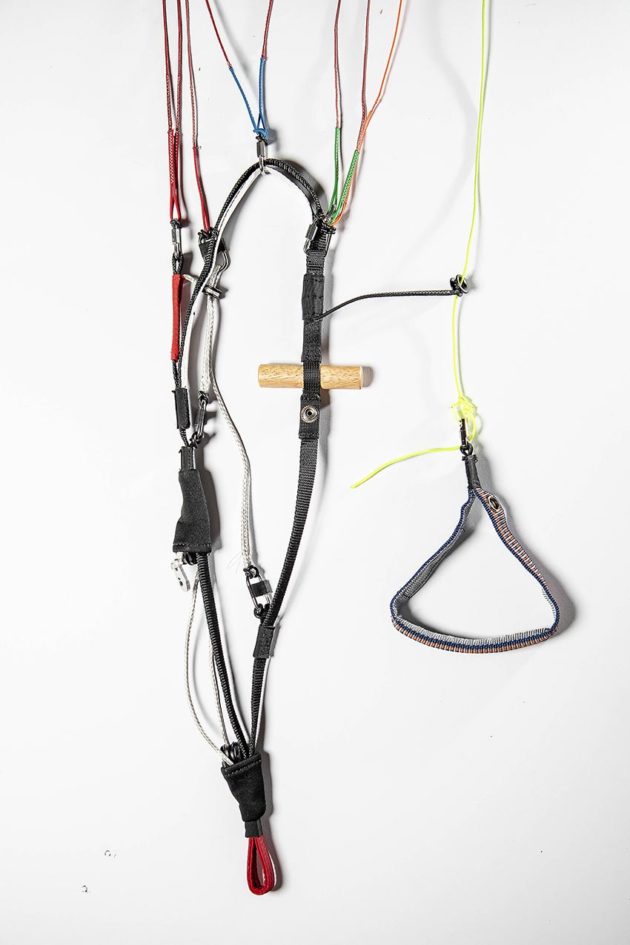
On launch
I first flew the standard-weight Fusion at our local site just before the lockdown. It was a thermic day and started with high cloud and wind but got better and better. In a thermic wind the wing rose steadily and easily with very little control needed to stop it overhead.
When groundhandling you can pull on the rear risers and see how the wing responds exactly like a two-liner. When you pull back, the whole wing’s angle of attack changes – it moves as one. This is a good way to get accustomed to rear-riser flying, by steering the wing through gusts. It’s impressive, with no crease-lines visible at all across the span.
Letting the wing accelerate it eased me into the air.
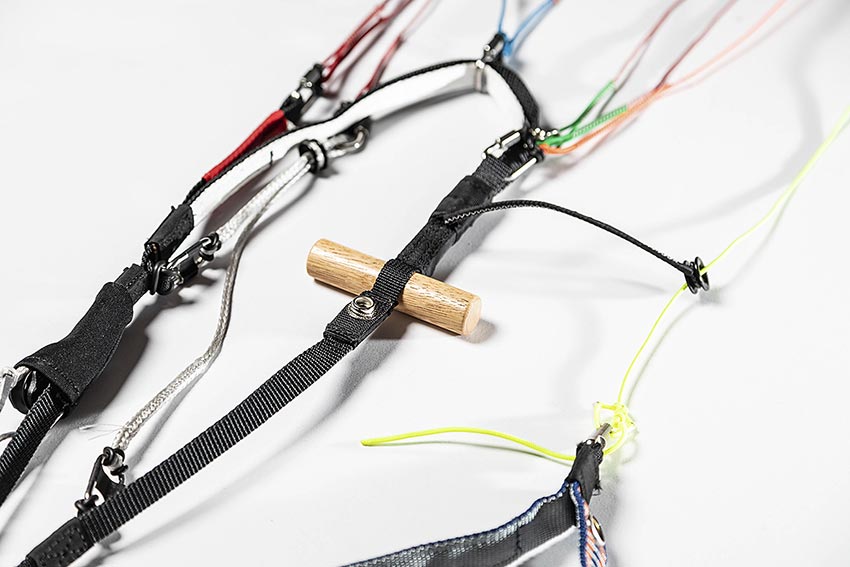
In the thermals
I felt at home on the wing from the first turn. The brakes are immediate and reactive over the first part of the pull. Brake pressure is reasonably heavy, similar to the latest Rush, which is good for pilots moving up. The travel is long and I never felt it get near the spin point in tight turns; you need to take a wrap and a good pull to get it close to the stall.
It turns precisely and flat with small brake movements. A further pull and a kick of weightshift will get it banked up nicely. Where I fly we spend a lot of time climbing low to the terrain in small thermals, so I really appreciate a wing that can climb out on a wingtip, something the Fusion proved it was very capable of.
Higher up, in more sorted thermals, I could let the wing turn flatter and basically do its own thing. It has nice hook-in-and-forget behaviour once in a core. In quieter conditions when you are searching out the best lift, I found I could let it fly at trim and it would search out the lift well.
The wing feels very pitch stable and for the aspect ratio it is very comfortable. Feedback through the brakes is quite subtle but I could feel what the air was doing out at the tips through them, which made finding the best lift or lines easier. Relaxing to fly even in stronger air the wing’s comfort and handling make it a natural progression from a high-B.
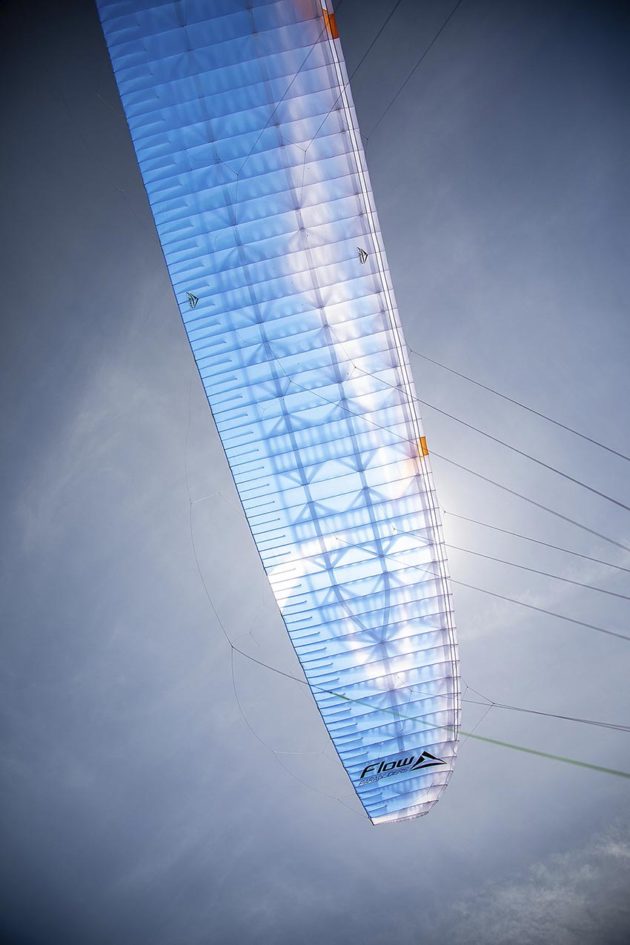
Rear-riser control
While this wing climbs as well as its peers, it’s on glide that it really shines. Trim speed is fast for an EN-C. I confirmed this with the TAS speed probe, getting a consistent speed of 39km/h.
That pitch stability shows again too: the glider floats up any lift nicely, giving good information. Applying speedbar – reasonably light pressure – doesn’t affect pitch stability and I felt comfortable even at full speed.
The rear-riser control is effective and I felt very connected to the wing. I used it more for slowing up in lift or for course correction than having to catch the wing. Even flying through convergence I didn’t encounter anything that required me to massively pull the wing back.
Away from the terrain in wider thermals I tried thermalling with the rear risers. I was able to turn tightly enough without any deformation of the wing. It is a bit physical but very doable and definitely a method I will be practising more.
I did quite few long glides out front from our local mountain pushing upwind, and was impressed by the performance. The wing seemed to surf up bubbles of lift, making the most of them.
My colleague Hugh also flew the glider. He has more experience on two-liners than I do, and he felt the rear-riser control is 30-50% heavier than two-liners, but said it is a good introduction to this style of flying. With practice, pilots learn to fly fast, using the rear-risers to keep the nose open and surf through the turbulence. In short, it’s a good way to step into the world of rear-riser flying, with the knowledge that if you do take a hit, you’ll be well within your comfort zone as an experienced three-line pilot to deal with it.
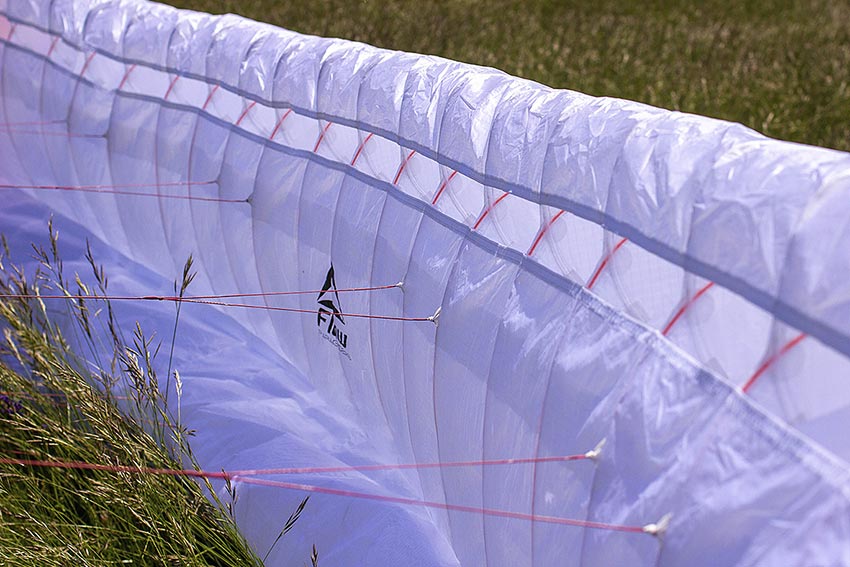
Going lightweight
I also flew the light version of the Fusion. Made with 27g/m2 material it is basically the same wing, just lighter. It has a little more feel in the thermals and the handling is a little bit sharper, but it still retains that comfortable ride and it seems even more pitch stable. Brake pressure is still relatively high – for some reason I expected it to be lighter, but it shows that brake pressure is more to do with profile, internal pressure and brake fan layout than materials.
Safety
Whether flying in spring thermals or calm air at all times the wing felt well pressurised and stable. I did have a couple of 20-30% outside tip tucks in a particularly feisty wind-blown thermal as I settled onto the wing, but I was able to maintain the turn and it popped straight back out. As I noted earlier there is quite a lot of brake travel before you get to the stall point and the pressure ramps up.
Despite the two-line design at the tips, big-ears are easy to pull in and are nice and stable, giving a reasonable sink rate making them efficient for escaping clouds, especially when combined with speedbar. B-line stalls aren’t advised because of the two-line construction at the tips. Spirals and wingovers are very predictable. I was a tad rusty after the lockdown and the wing reacted well to small mis-timings and it was easy to get a high bank angle. Spiral exits are equally simple with good control to bleed the energy.
Conclusion
All up I enjoyed flying the Fusion, for the level of control combined with comfort. It is undoubtedly a top performer in its class and makes for a great machine for progressing on. Any competent B-pilot should have no difficulty on this wing, and you will learn some of the handling experience you will need to fly high-end wings. I really love how connected you feel to the wing, especially at speed. It has a great level of performance for mountain adventures, and I am looking forward to taking it on some longer flights.
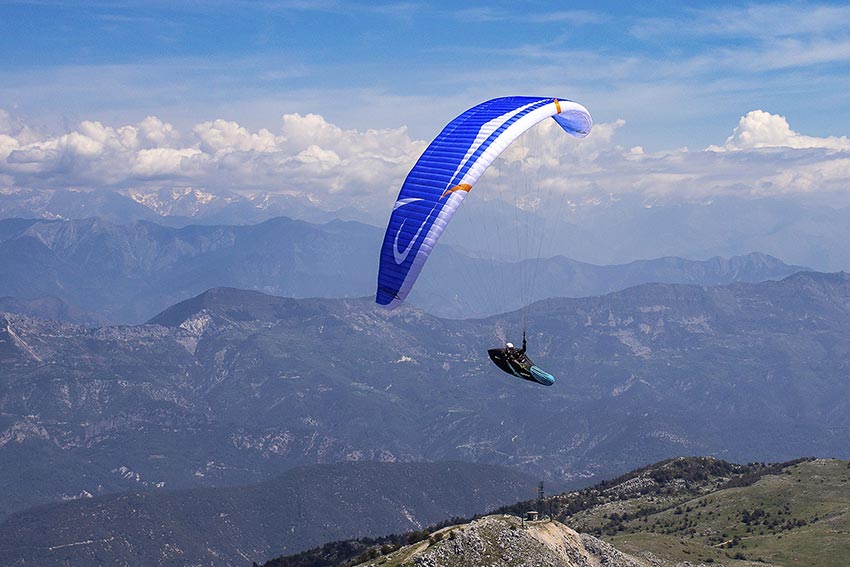
Q&A: Felipe Rezende, Flow designer
When you groundhandle the wing in strong winds, just using the rear risers, it really feels like a two-liner and the wing responds altering the angle of attack really nicely and uniformly. How did you manage this? Was there any compromise in integrating the Cs with the Bs for in-air control?
The main goal was to bring the key benefits of a two-liner to the EN-C class without compromises. The Fusion’s rear-riser control is as efficient as on two-liners. It changes the angle of attack without distorting the profile. To do that we had to distribute the A, B and C attachment points equally on the chord of the wing, combined with specially designed 50% reduction risers A to B, B to C. The Fusion’s risers ultimately change the angle of attack without distorting it like two-liner risers do. This gives the pilot the opportunity to fly efficiently at maximum, as you can cruise at full speed and control the glider with the rear-risers to control pitch, catch collapses and steer: a game-changer for the class. There were no compromises integrating the Cs and Bs. The only difference when compared to rear-riser steering on a two-liner is that the Fusion’s rear-riser toggles are harder to pull.
The top surface reinforcements are much stronger in the mid-section than the outer thirds (to the wingtips). Why is this? How does it help?
Another key aspect of the design was to optimise the plastic rods and internal structure so that the Fusion is simple and quick to pack small without needing a pillow. On the two-liner section and undersurface of the glider we’ve used the flexible orange rods which can withstand excessive bending, don’t require extra care but still give support and stiffness. For the most important part of the aerofoil we opted to use thicker and stiffer rods. They don’t distort even at high speeds and extreme angles of attack. Even though they are thick and stiff, they are short and are protected when concertina packed.
Tell me about the rigging – the way the wing is more ‘two-line’ in sections, and ‘three-line’ in others.
We’ve been told a similar line layout has been used by another manufacturer, but during the development of the Fusion we were unaware of that and I believe we are the first to combine the hybrid line layout with equally-spaced attachment points and the specially designed 50% reduction risers. The three-liner section of the glider works in harmony with the two-liner section. To give stability to a paraglider while on bar we need to have a higher angle of attack on the wingtip section than the centre. The concept works beautifully and we have much less distortion and better feel than a traditional three-liner because we can calculate precisely how much angle of attack on the wingtip section we want to have at trim and at speed. With the hybrid line layout and rear-riser toggles you can feel the glider and can be more reactive and catch any collapse before it happens, without the need to come off the speed bar.
Overall, it feels to me like a cleaner completion of the ‘hybrid project’ than the Triple Seven Queen 2, which I really rate as well. I say this because when you pull down on the rear-riser bars, there is absolutely no deformation. It is more two-liner in feel than the Ozone M7 in one way, because you have the bars, which give a nice solid feel.
Solidity at speed was one of the key design criteria for this project and an aspect we didn’t want to compromise. You can cruise all day at full bar on the Fusion without surprises.
I flew it pretty light with a Lightness 2 harness at 94 kg. Top speed and speed at glide seemed similar to a well-loaded Queen 2. I’d expect it to perform a little better loaded properly. I’d say it’s in the M7 / Queen 2 performance bracket. Any comments there?
The best performance for climb, glide and speed is at the top of the weight range. We’ve noticed the Fusion’s top speed is one of the best in its class, and the reason we call it a “game changer” is that we can easily keep up with EN-D two-liners on XC flights, and this has never been accomplished before on an EN-C glider. In a race environment while on full bar flying over a mountain range or under a cloud street or in a convergence, the Fusion’s performance is identical to the EN D two-liners. Hugh Miller
Manufacturer’s SPECIFICATIONS
Flow say: “Feel connected like a two-line race machine with the security and comfortable workload of an EN-C glider.”
Use: XC flying
Pilot level: frequent flyers, regular XC pilots
Sizes: S, M, ML, L
Certified take-off weight (kg): 72-92, 80-103, 92-115, 107-128
Flat area (m2): 22.95, 24.45, 26.30, 28.40
Glider weight (kg): 4.45, 4.65, 4.95, 5.10
Cells: 68
Flat aspect ratio: 6.35
Certification: EN / LTF C
This review was published in Cross Country issue 211


